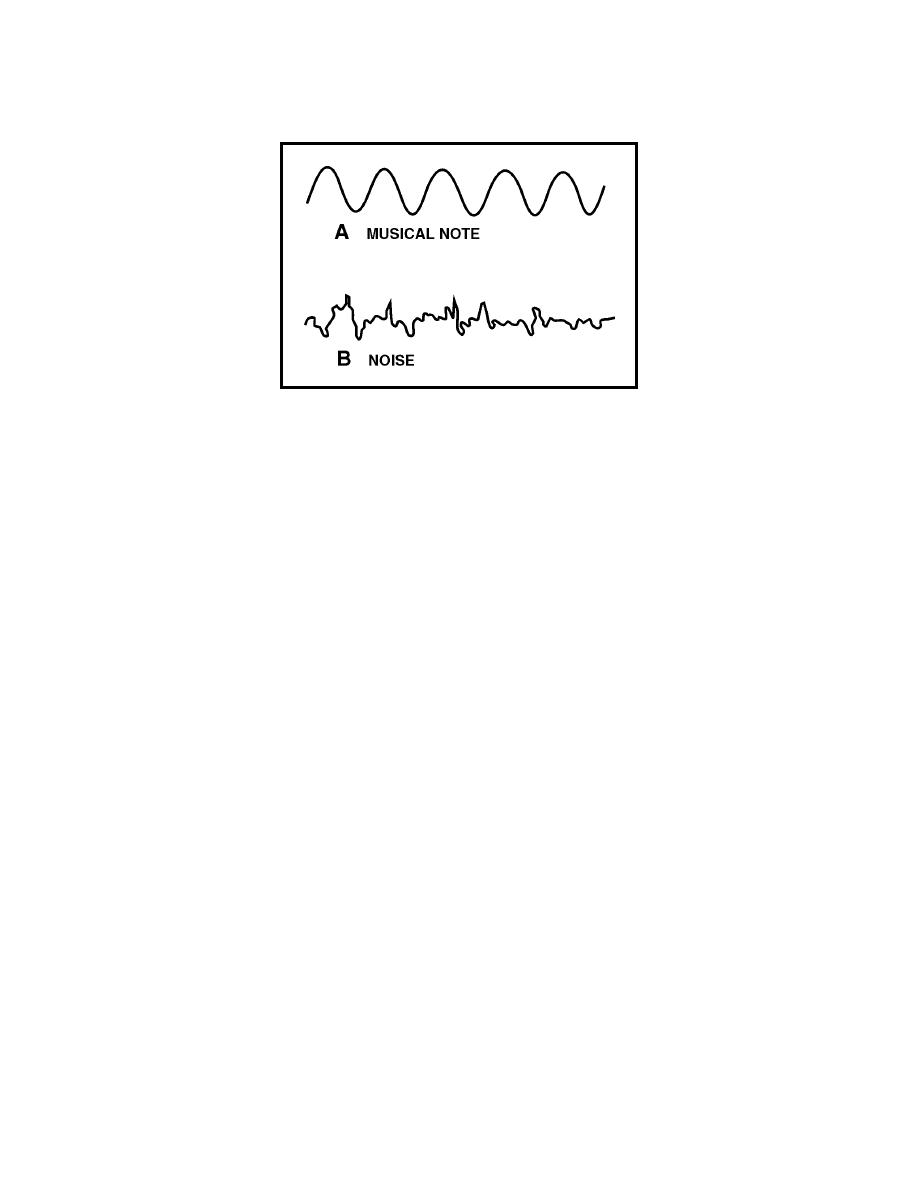
TC 9-64 _________________________________________________________________________
Figure 1-Sum 6. Musical Sound Versus Noise
Pitch, intensity, and quality are the three basic characteristics of sound.
Pitch describes the frequency of sound. Intensity describes how much energy
is transmitted. Quality enables us to distinguish one sound from another.
The density of a medium, temperature, and atmospheric pressure affect the
velocity of sound. If temperature, density, or pressure increases, the velocity
of sound increases and vice versa.
Acoustics is the science of sound and relates to the sense of hearing.
Echo is an example of reflection. Sound echoes are used in sonar and depth
finders to determine or measure the range of an object or the depth of the
ocean bottom.
Reverberation is the multiple reflections of sound waves. The prolonged roar
of thunder is caused by reverberations. With underwater sound equipment,
reverberations of nearby objects may interfere with returning echoes from
actual targets.
Interference occurs when two waves move simultaneously through a medium.
They can interfere constructively, destructively, or produce a resultant of
zero.
Resonance occurs when an objects vibrates (or resonates) at its natural
frequency. When different frequencies are produced inside a cavity, the sound
from the cavity sounds louder at its resonant frequency than at all other
frequencies.
Noise is any disturbance that distracts from or distorts the quality of sound.
A photon is the smallest unit of radiant energy that makes up light waves
and radio waves.
Angstrom () units are used for measuring the wavelength of light. One
angstrom = 10-10 meters .
The visible spectrum contains all the colors between infrared and ultraviolet.
Infrared and ultraviolet are invisible to the human eye.
1-44



 Previous Page
Previous Page
